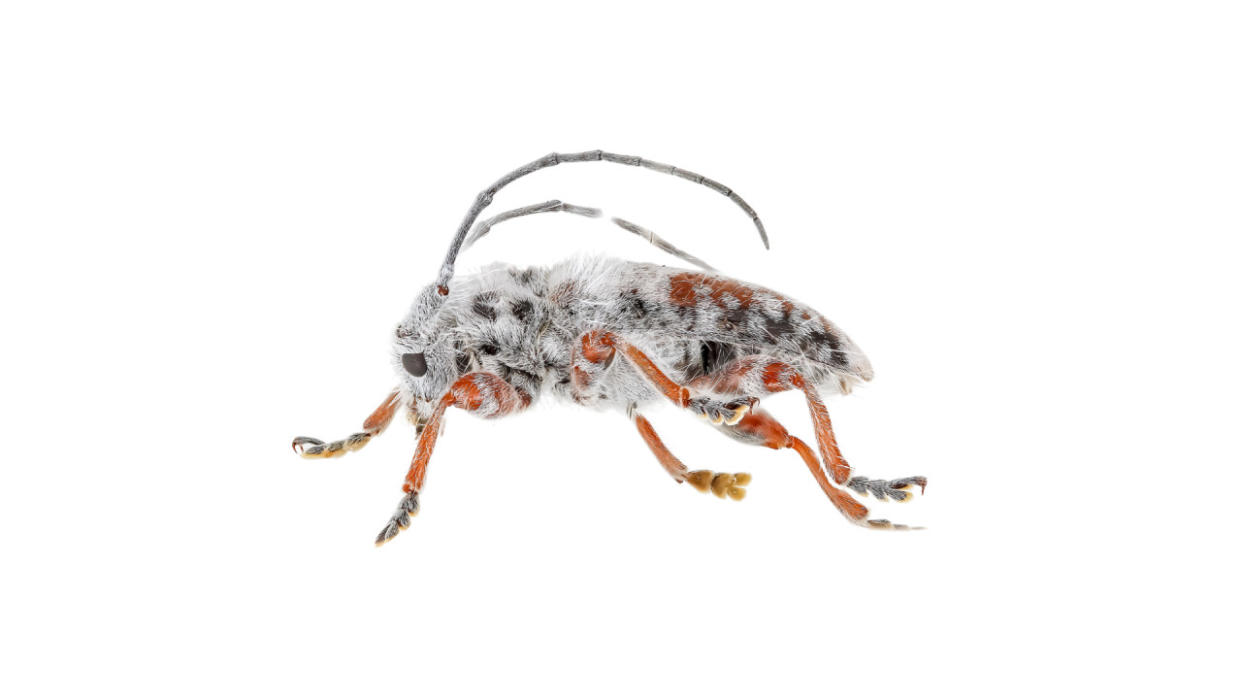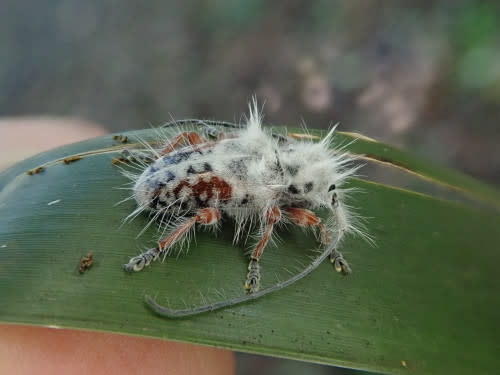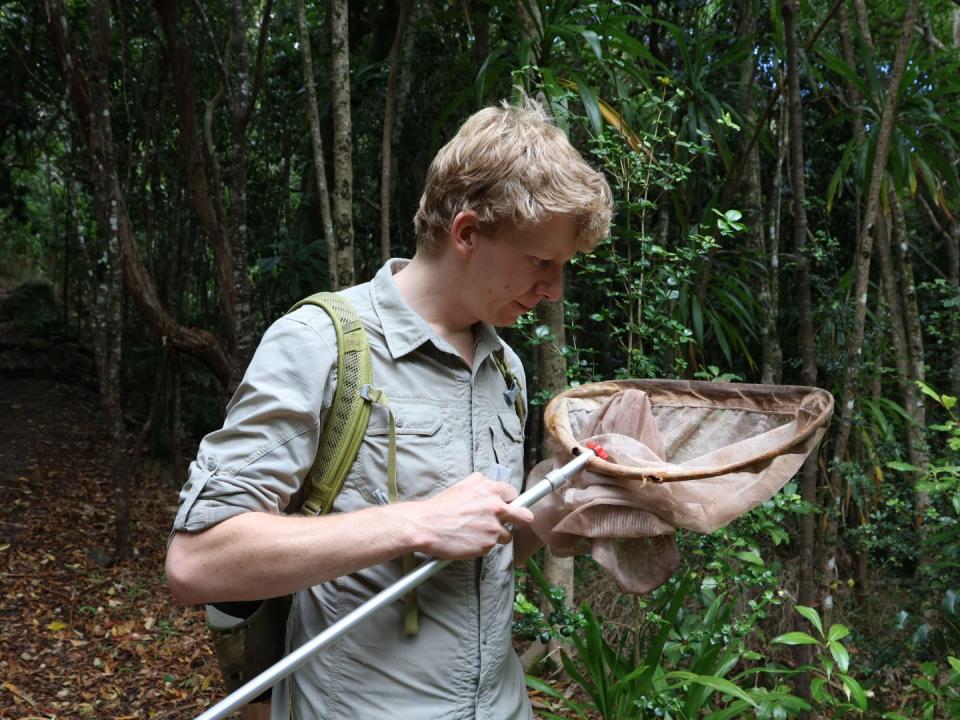Researcher stumbles on new species of "unusually" hairy beetle

While on a camping trip in Australia’s Gold Coast hinterland rainforest in 2021, James Tweed, a Ph.D. candidate from the School of the Environment at the University of Queensland, stumbled on a new genus of fluffy longhorn beetle, later named Excastra albopilosa.
In a statement, he says he almost mistook the white beetle for bird droppings.
“I was walking through the campsite at Binna Burra Lodge one morning, and something on a Lomandra leaf caught my eye,” he recalls.
“To my amazement, I saw the most extraordinary and fluffiest longhorn beetle I had ever seen.”
Measuring 9.7 millimeters, the beetle has red and black coloration and long white hairs.
Tweed documented the beetle, shared photos on an Australasian beetle Facebook group, and consulted experts at the Australian National Insect Collection (ANIC) in Canberra, who helped confirm it represented a new species and genus.

A photo of the beetle resting on a leaf. (James Tweed)
SEE ALSO: This spring will see the biggest cicada emergence since the 1800s
World's hairiest?
The longhorn beetle family currently has about 36,000 described species. The genus name of the newest addition, Excastra, translates from Latin to “from the camp.” Albopilosa, its species name, translates to “white and airy.”
It’s not clear what function the hairs serve, but Tweed speculates it may deter predators by helping the beetle resemble an insect-killing fungus.
“There’s quite a few beetles that are very hirsute,” Tweed says via LiveScience.
“But this one is really unique in the length of the hairs and the patterning. It’s not uncommon for a beetle to be hairy, but it’s uncommon to be this hairy.”

James Tweed conducting field work. (James Tweed)
DON'T MISS: They're back! Five ways to keep ants out of your home
Elusive beetle
Tweed says the area where the beetle was found has been popular with entomologists for more than a century, which makes it puzzling it has remained elusive until now.
Perhaps it’s good at hiding: Tweed says he’s been back several times to find more but hasn’t had any luck.
Another hypothesis: The beetle may be extremely rare.
There’s also the possibility researchers just haven’t been looking in the right places.
“[The beetle] may also be common but we just haven’t found where it lives yet,” Tweed tells LiveScience.
“For all we know, it may be living in the tops of trees where we haven’t surveyed.”
The findings have been published in the Australian Journal of Taxonomy.

